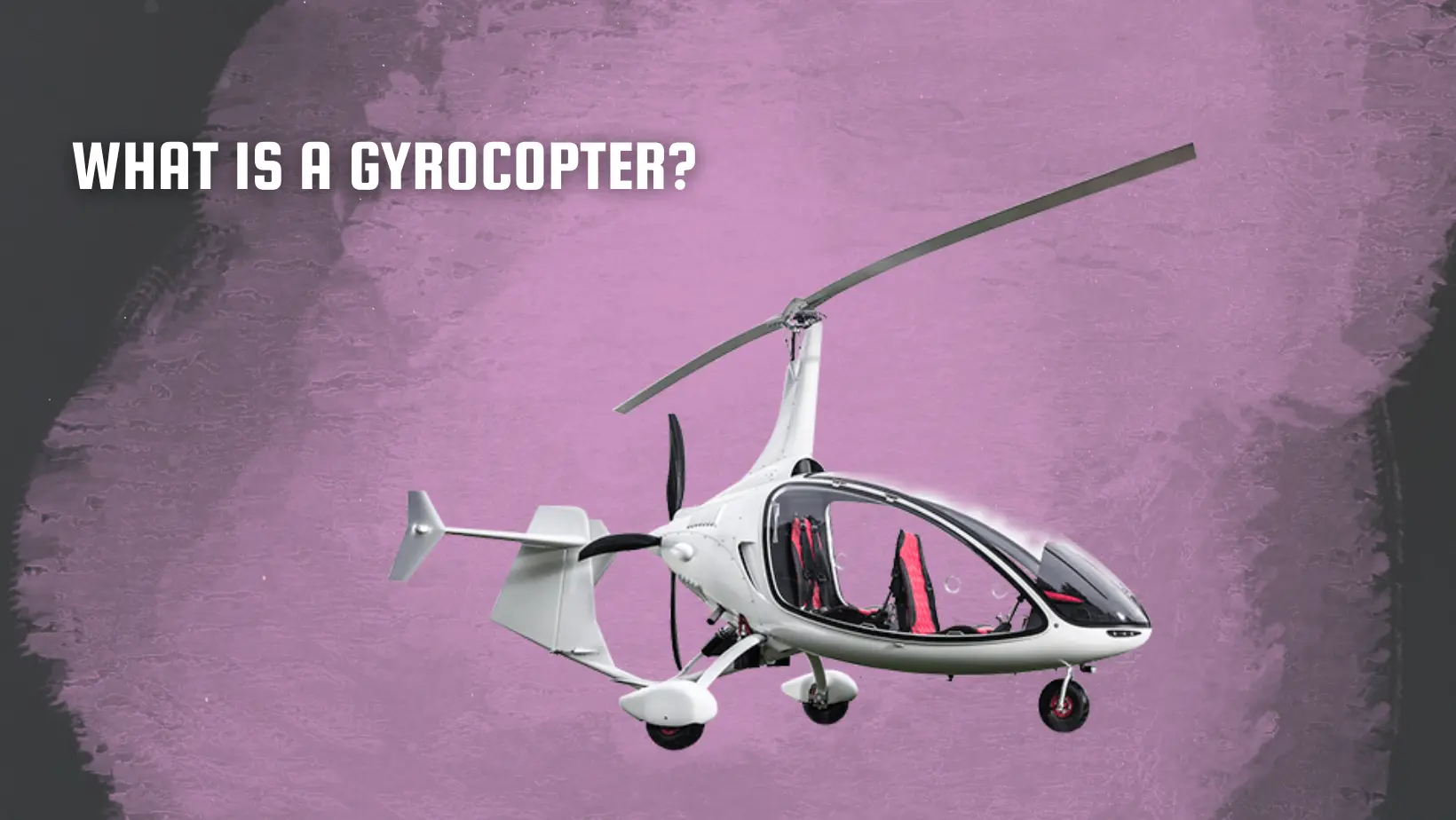A gyrocopter, also known as an autogyro, is a type of rotorcraft that uses an unpowered rotor in autorotation to generate lift, and an engine-powered propeller to provide thrust. Unlike a helicopter, the rotor of a gyrocopter is not powered by an engine, but instead rotates freely as the aircraft moves forward, providing lift. The engine powers a propeller that provides forward thrust, allowing the gyrocopter to move through the air. Gyrocopters are typically smaller and less complex than helicopters, and are often used for recreational flying or aerial photography.

Recently, gyrocopters have been in the news following a 61-year-old man named Doug Hughes who flew a gyrocopter onto the lawn of the US Capitol building in Washington. A gyrocopter is similar in appearance to a small helicopter, but the main difference is that it lacks an engine to turn the rotors. Instead, the rotors are self-propelled through a process known as 'autorotation', which occurs due to the way air flows through them.
A gyrocopter is considered one of the safest methods of flying because its engine is not connected to the rotors. This means that if the engine were to stop in flight, the gyrocopter would not be seriously affected. Additionally, the gyrocopter has a very short landing roll. It can fly at lower and slower speeds more safely than most other flying machines, and is capable of flying in weather conditions that would ground most other sport aircraft. This is particularly important in Britain, where weather conditions can be challenging.
Gyrocopters, which have been traditionally known as open cockpit "motorbikes of the sky," are now available as fully enclosed models since late 2010. The Gyrocopter Experience operates flying schools across the UK where customers can experience flying one. Additionally, the head office of The Gyrocopter Experience in York houses a gyrocopter museum and sales showroom.
A gyrocopter is defined by a rotor that spins freely and is turned by the flow of air passing through it from below. The downward force generated by the rotor's aerodynamic reaction provides lift to the vehicle, enabling it to remain airborne. In addition, a separate propeller is used to provide forward thrust and can be positioned in either a puller configuration, with the engine and propeller located at the front of the fuselage, or a pusher configuration, with the engine and propeller located at the rear of the fuselage.
While a helicopter operates by pushing its rotor blades through the air and drawing air from above, the rotor blade of a gyrocopter generates lift in a similar manner to a glider's wing. This is achieved by altering the angle of the air as it moves upward and backward relative to the rotor blade. The blades of the gyrocopter (autogyro) rotate freely through autorotation, and their angle is designed to not only provide lift but also to accelerate the rotation rate of the blades. This results in the rotor turning at a stable speed, with the drag force and thrust force being balanced.
Gyrocopters are typically unable to perform vertical takeoff, except in the presence of a strong headwind, due to the fact that the craft must be in motion relative to the surrounding air in order to force air through the overhead rotor. However, there are a few exceptions, such as the Air & Space 18A, which have demonstrated the ability to perform short takeoffs or landings.
Juan de la Cierva was a multi-talented Spanish engineer, inventor, pilot, and aeronautical enthusiast who participated in a design competition in 1921 to develop a bomber for the Spanish military. He designed a three-engined aircraft, but unfortunately, during an early test flight, the bomber stalled and crashed. This event troubled de la Cierva, and he made a vow to develop an aircraft that could fly safely at low airspeeds.
As a result of his determination, de la Cierva invented the first successful rotorcraft in 1923, which he named autogiro (gyrocopter). His autogiro was a revolutionary aircraft that used an airplane fuselage with a forward-mounted propeller and engine, an un-powered rotor mounted on a mast, and a horizontal and vertical stabilizer. This design allowed the autogiro to fly safely at low airspeeds, which was a significant breakthrough in aviation technology.
De la Cierva's autogiro became the predecessor of the modern helicopter, and his invention has had a profound impact on the aviation industry. His innovative design paved the way for the development of modern helicopters, which are now used for a wide range of purposes, including transportation, emergency medical services, and military operations.
In summary, Juan de la Cierva was a visionary inventor who was determined to develop an aircraft that could fly safely at low airspeeds. His invention of the autogiro was a significant breakthrough in aviation technology and has had a lasting impact on the aviation industry.